The Great Depression and World War Two in pictures
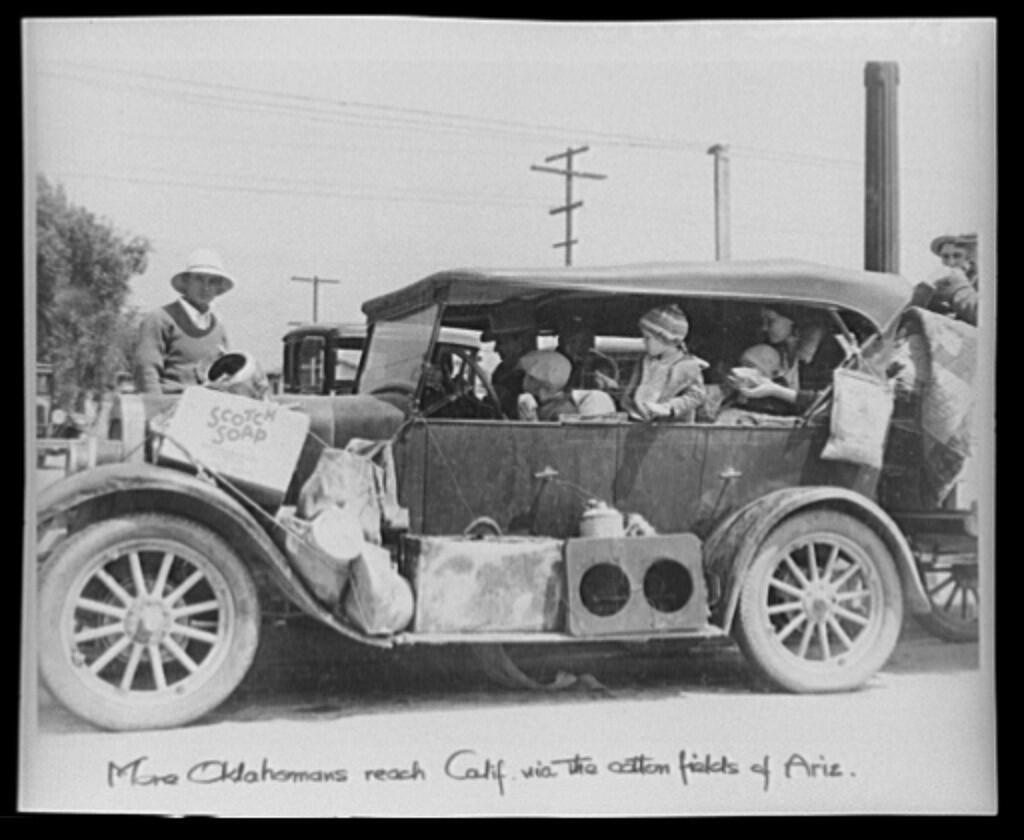
Dorothea Lange photographed the arrival in California of a carful of people fleeing the Dust Bowl of Oklahoma in 1935.
(Dorothea Lange / Library of Congress Prints and Photographs Division )Follow Scott Martelle on Twitter @smartelle.
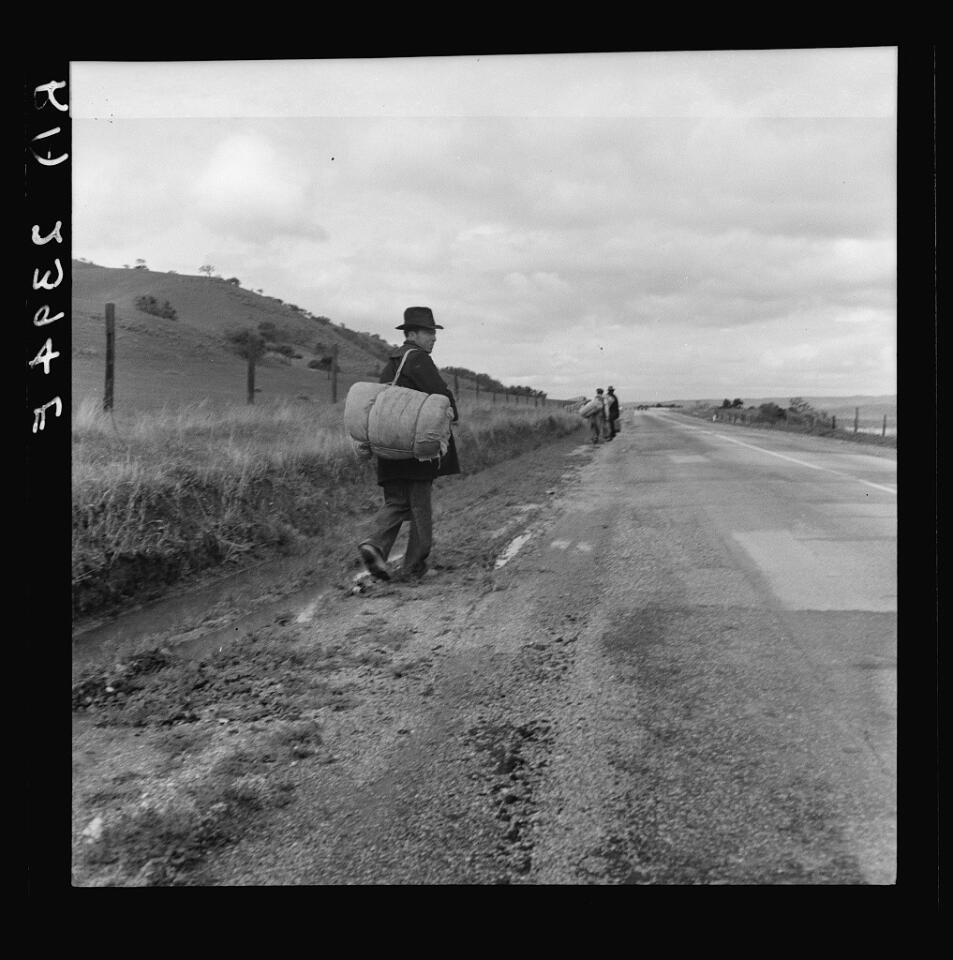
Transients rousted by police leave Los Angles during the Great Depression.
(Dorothea Lange / Library of Congress Prints and Photographs Division)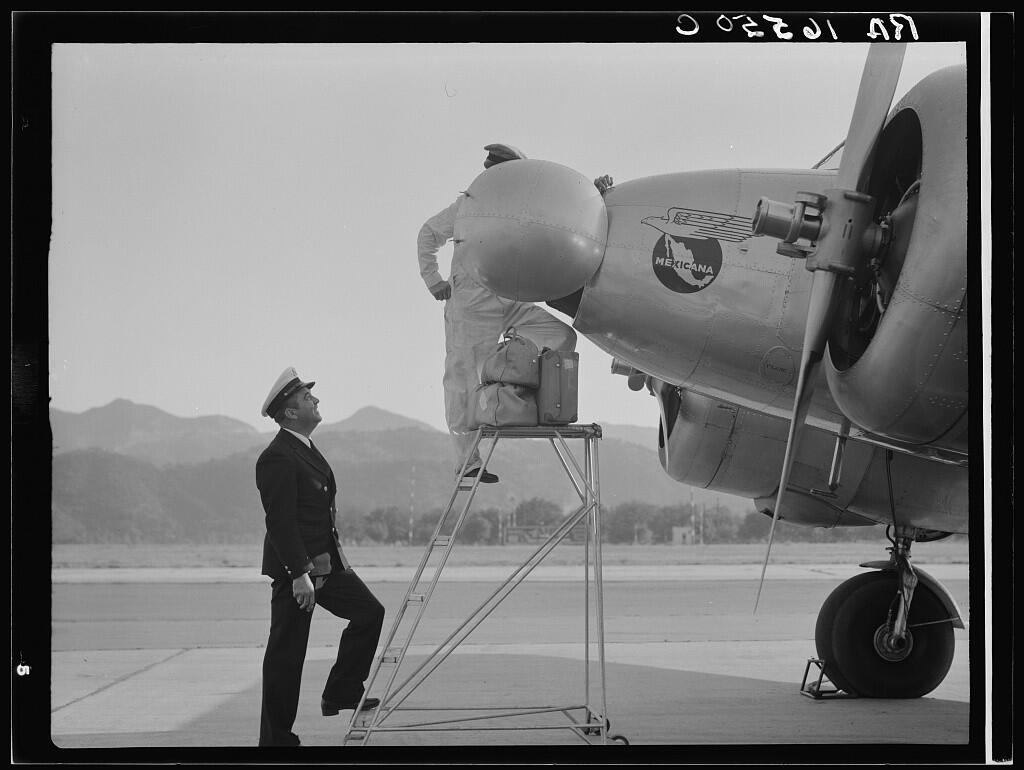
A plant quarantine inspector examines a plane at the Glendale Airport in 1937.
(Dorothea Lange / Library of Congress Prints and Photographs Division)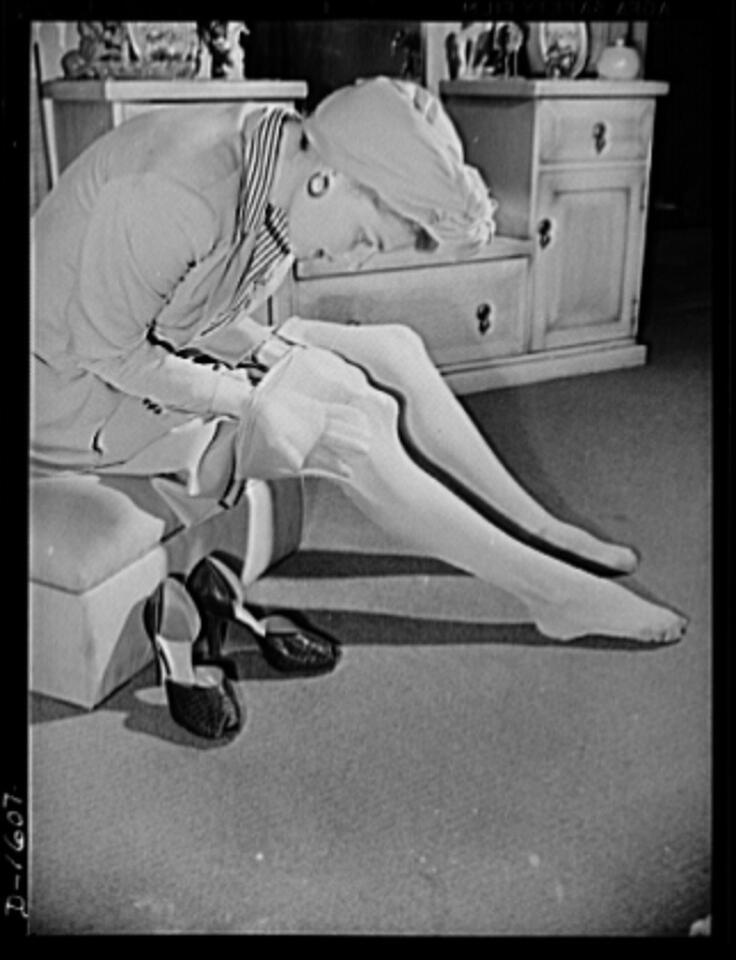
Actress Ann Sheridan demonstrates cotton stockings as part of a campaign to push the fabric after silk and nylon were taken for the war effort.
(unknown / Library of Congress Prints & Photographs Division)Advertisement
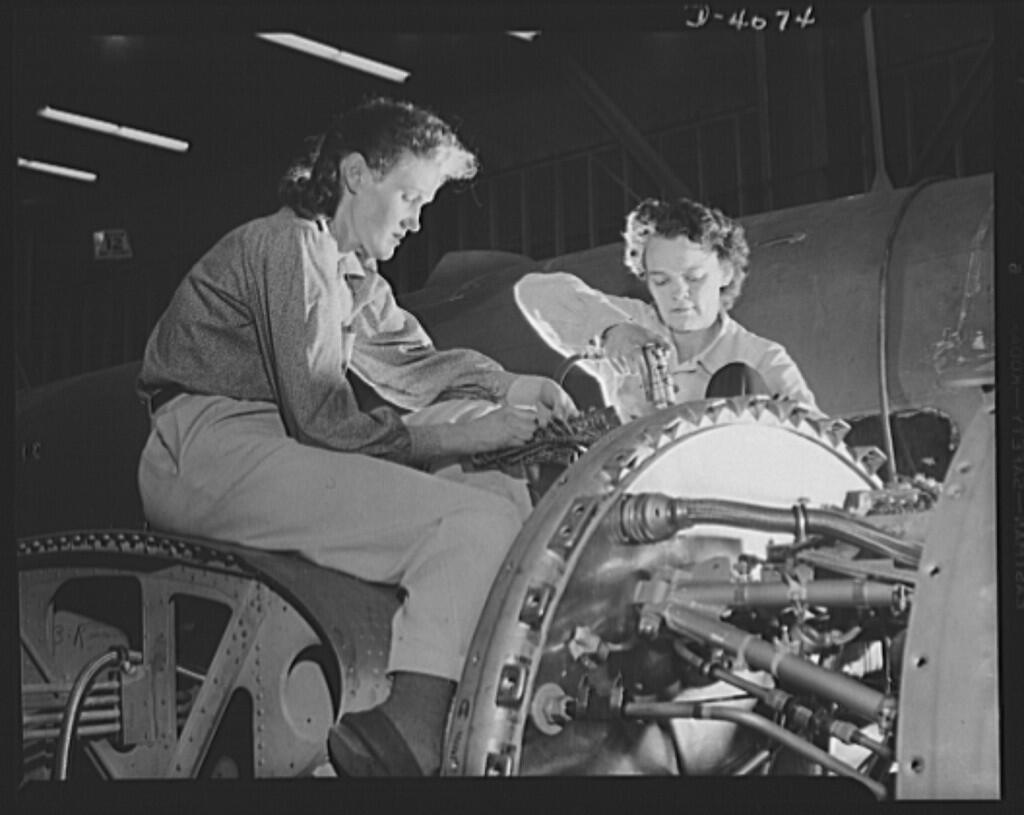
Women workers in 1942 in a Burbank factory that made bombers.
(David Bransby/Library of Congress Prints & Photographs Division)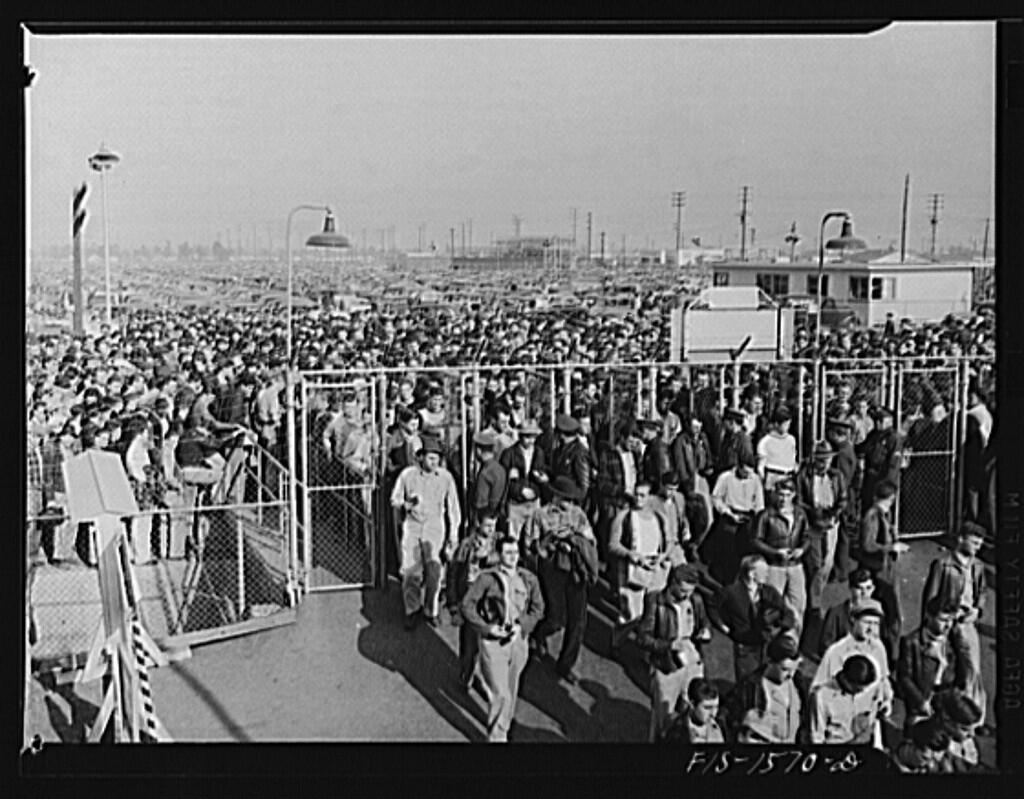
Workers enter North American Aviation in Inglewood in 1942 to begin their shift making warplanes.
(Lownds/Library of Congress Prints and Photographs Division)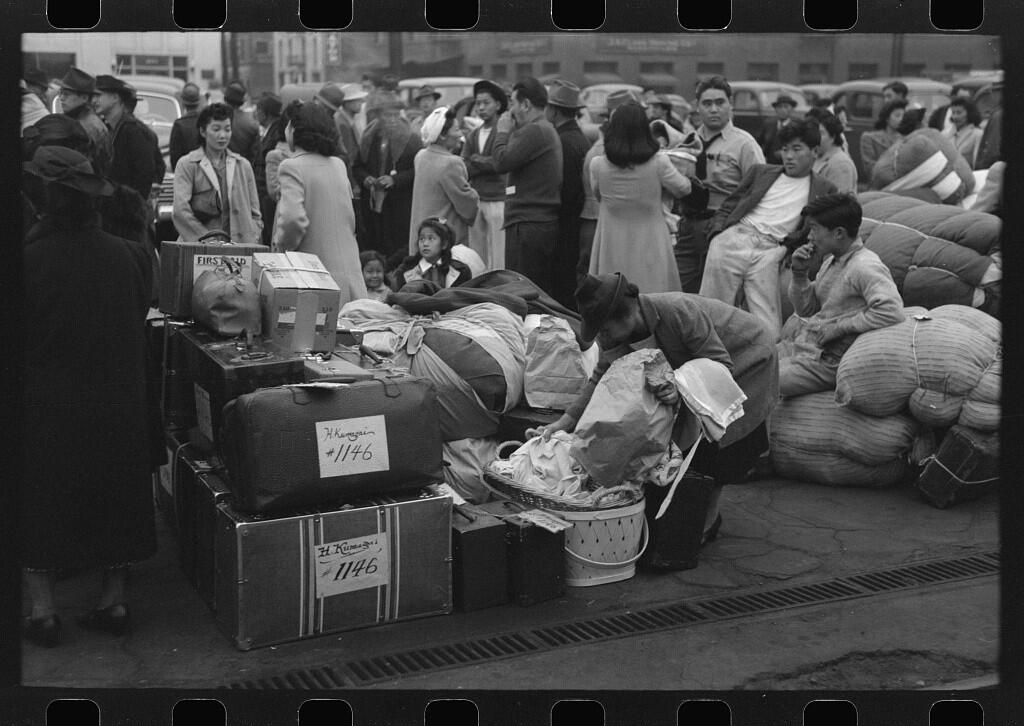
Japanese Americans wait with their luggage at the Santa Fe rail station in Los Angeles for trains that will take them to an internment camp in the Owens Valley.
(Russell Lee / Library of Congress Prints and Photographs Division)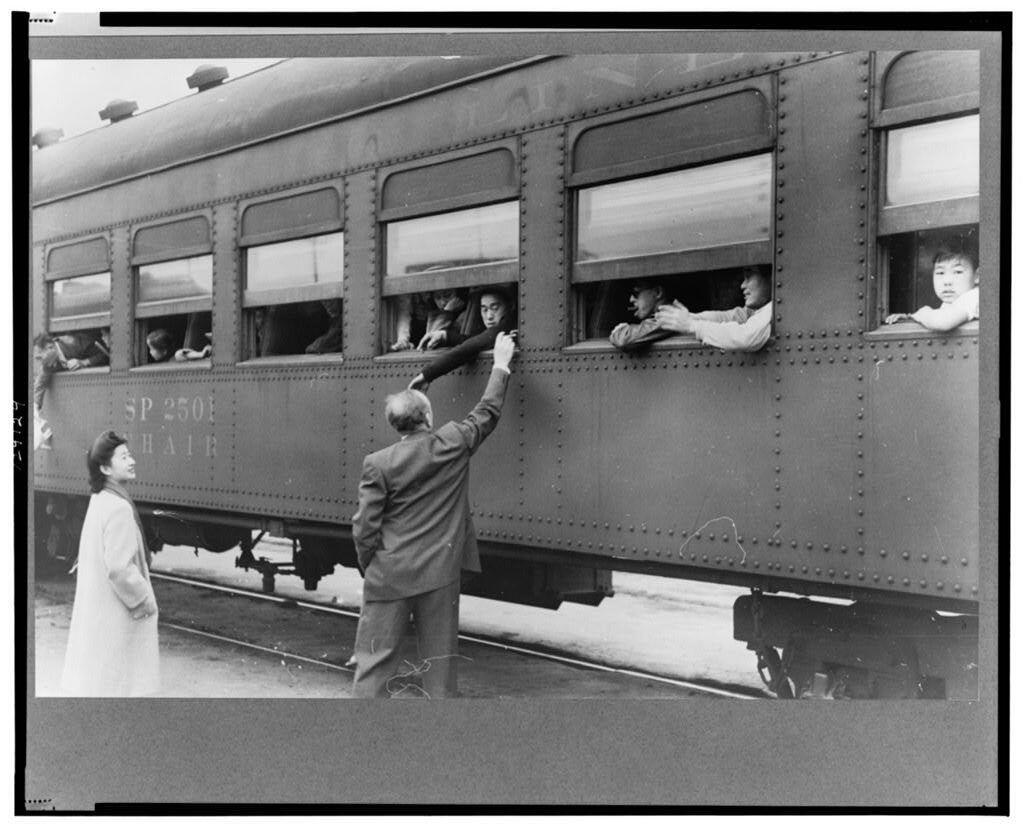
Japanese Americans departing Los Angeles for Owens Valley, and internment, under war-time laws that deprived them of their freedom, and basic civil liberties.
(Russell Lee/Library of Congress Prints and Photographs Division)Advertisement
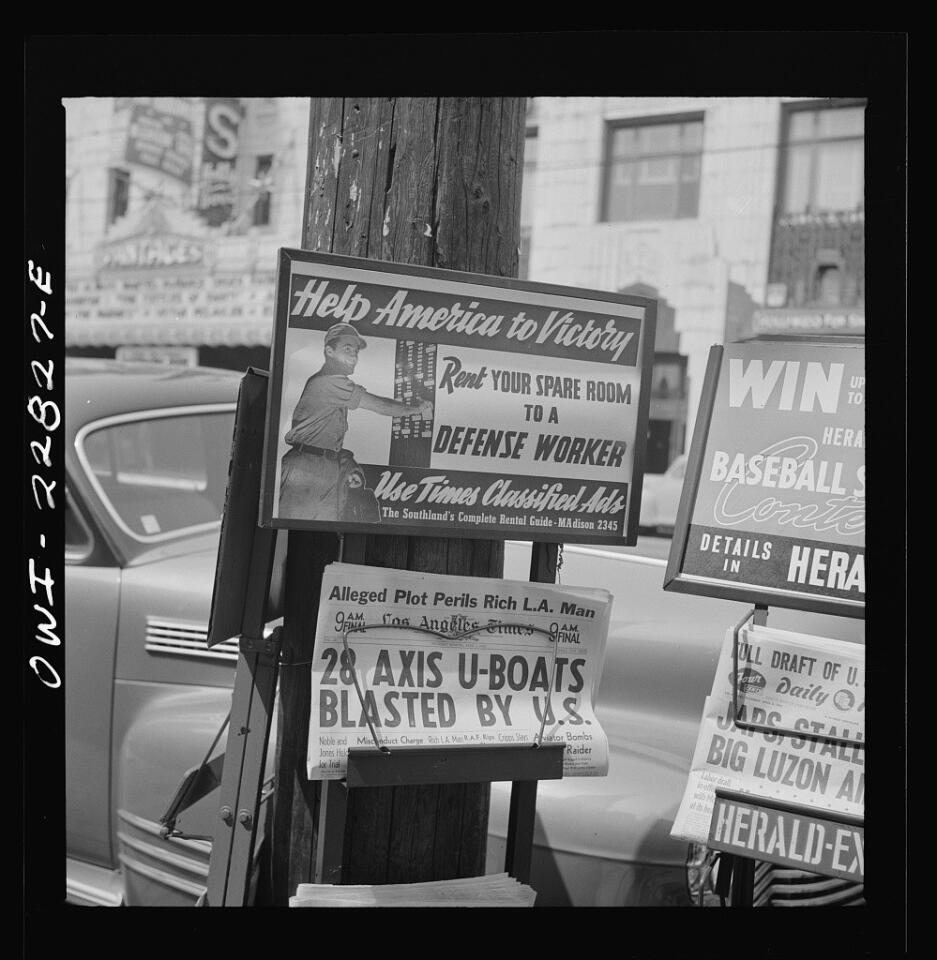
A street-corner newsstand in Los Angeles, bringing the daily news of the war in April 1942.
(Russell Lee/Library of Congress Prints and Photographs Division)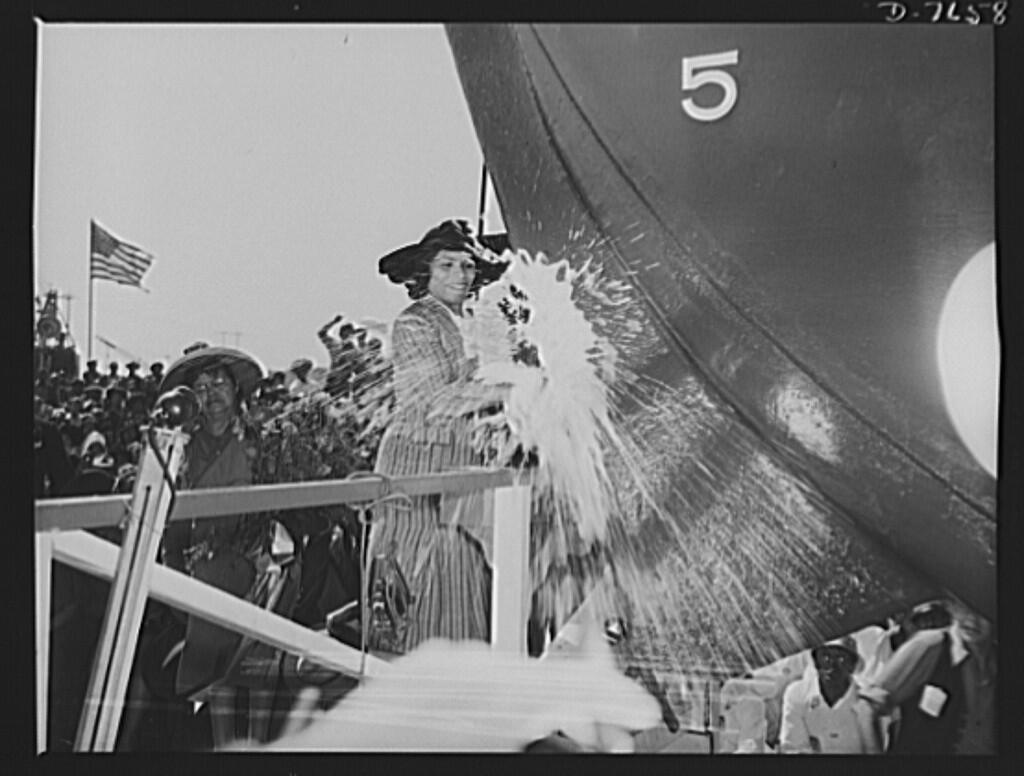
Marian Anderson christens the Booker T. Washington, the first Liberty Ship named for an African American, at California Shipbuilding Corp.’s Wilmington yard Sept. 29, 1942.
(Alfred T. Palmer / Library of Congress Prints & Photographs Division)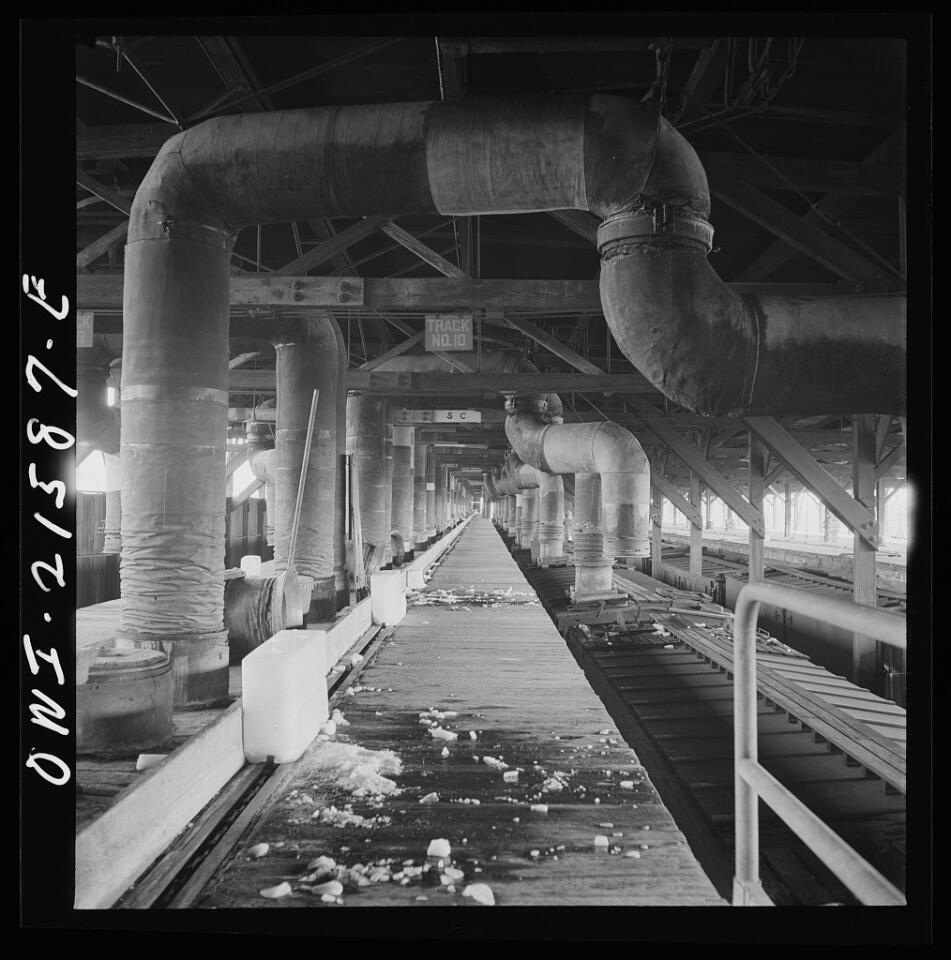
Railroad refrigerator cars, lower right, are precooled at a San Bernardino ice plant prior to loading with perishable goods grown in Southern California. Twenty-degree air is blown through the cars before they are packed with ice and the goods to be shipped.
(Jack Delano / Library of Congress Prints and Photographs Division)






